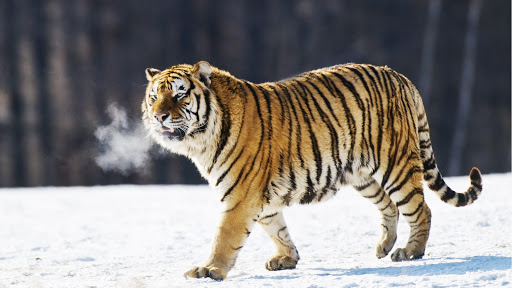Tiger: The Strongest Cat in the World
Bengal Tiger image source: unsplash.com
Siberian tiger image source: news.cgtn.com
Tigers are the world's largest cats. On average the big cats weigh about 450 pounds. The largest tiger is the Siberian tiger subspecies, measuring up to 13 feet long and 6 feet high and weighing up to 660 pounds. This extra weight is primarily because of large powerful muscles. Unlike lions, the second largest of the big cats, tigers have more muscle mass and are therefore heavier.
Webbed toes of a tiger image source: pinterest.com
Tigers have webbed toes. Often living near bodies of water, tigers have adapted for a semi-aquatic lifestyle. They appeared to enjoy being in the water unlike most cats and are excellent swimmers using their powerful muscles to propel their bodies in the water. They've also evolved to have webbing between their toes. The webbing allows the big cats to push around a greater volume of water with each stroke of their paws.
White tigers image source: businessinsider.com
White tigers are a type of Bengal tiger. The classic black and orange coloration of most tigers is caused by the pigment EUMELANIN, which turns fur black and PHEOMELANIN, which turns fur orange. The production of pheomelanin is triggered by the Gene-SLC45A2. White tigers carry a mutated version of this gene which prevents them from reducing orange color pigmentation.
graph source: sites.google.com
Fewer than 4,000 tigers remain in the wild. At the turn of the 20th century, approximately 100,000 tigers roamed the wild, living as far west as Turkey and as far north as Russia. But due to deforestation, human development and poaching, their range severely decreased. Within 100 years, the world's tiger population declined by about 96%. Over the past few decades, programs have been put in place to protect tigers and their habitats. With the help of the global community, tiger populations may slowly rebound.








Comments
Post a Comment